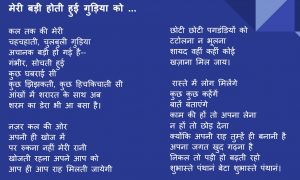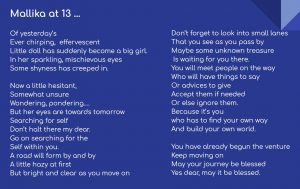Helping/Auxiliary/ Modal Verbs
As a teacher of English as a second language, I feel that concept of Helping Verbs in the English Language is an extremely important topic. Without correct use of helping verbs, any conversation will sound silly or funny (like I am come, Did he completed the work?). Also, without the knowledge of helping verbs one cannot say “no” or negate anything or even ask for something nor make an inquiry. Hence this is an attempt to explain the role of Helping Verbs.
The first thing to understand is that English has only two tenses: the present and the past. Other than these tenses, there is a third form of verb called the participle. Participles help in forming modal constructions. Perhaps that’s why they are called helping verbs.
Like there are two tenses, there are also two aspects – Continuous and Perfect.
Continuous –
This form means that an action is going on whether in the present or in the past, eg. ‘he is going’, ‘he was working’. In framing continuous structure, we need the verb ‘be’.
Verb ‘be’ has seven forms : am, is. are, was, were, being and been.
In a continuous construction, one of the first five forms is needed. While forming this, we need to put one of the five forms as per the situation demands, before the main verb and then add -ing to make it a complete construction. eg. – ‘He is go-ing’, ‘I am com-ing’. We should remember here that to make a proper continuous construction, it is obligatory that the main verb precedes one of the forms of the verb ‘be’ and then followed by ‘ing’. If not, we end up with a construction like ‘I am come’, ‘I working’. Both these structures are erroneous. The form of ‘be’ and -ing are like two crutches on which the continuous construction stands. In the absence of any one of them we get the incorrect constructions liked the examples mentioned above.
Perfect –
This indicates that the action has been completed recently or in the past. Here we need participles to form the verbal constructions. While forming perfect construction, we need the verb ‘has/have’. ‘Has’ represents the singular form and ‘have’ the plural. With has/ have we need to put the main verb in its participle form, eg. ’He has gone to school’. ‘Gone’ is the participle form of the verb ‘go’. We also need to remember that many of the participles look like past tense forms when they actually are participle forms, eg. ‘I have selected him as the captain of the team’. In this case, ’selected’ is the same form both in the past tense form and the participle.
Interestingly, one can use both continuous and perfect forms in the same sentence. eg. ‘It has been raining since morning.’ Since there is -ing after the main verb one needs ‘be’ helping verb and since the verb ‘has’ is the helping verb occurs in its participle form.
Negation and Interrogation –
In the introduction I have mentioned that one cannot ask questions or negate a statement without the helping verb. Until now all the constructions already consisted of ‘helping verbs’. But in a statement like ‘He works for an international company.’ there is no ‘helping verb’. So we need to posit some such that we either negate the sentence or confirm the statements and ask some questions.
In this case, the verb ‘do’ acts as an auxiliary verb. This helping/auxiliary ‘do’ can be used in all the three forms ‘do’(present), ‘did’ (past) and ‘done’ (participle) as per the need. We should remember that the verb ‘do’ carries the tense marker and not the main verb. When we have to negate the statement ‘He works for a company’ , we have to say, ‘He does not work for a company’. ‘Does’ is the present tense form of the verb ‘do’. It’s obligatory to shift the tense marker from the main verb (‘works’, here) to ‘do’ in its present tense form, which is ‘does’.
As teachers, we are influenced by grammars like Wren and Martin (which follows the model of Latin grammar) that makes us teach Future Tense. There is no future tense in English. There is only a reference to future time that is represented in several ways, e.g., ‘He is leaving in an hour’, or ‘I will finish my work tomorrow’. Here ‘will’ is not in a future tense form but it shows my willingness to finish my work in the near future. ‘Will’ is a helping verb here which has its own present and past tense forms (will and would). All the helping verbs, like any other verb, show present and past tense forms. Some of them even have a participle form like ‘been’ of the verb ‘be’ and ‘Had’ of has/ have and ‘done’ of the verb ‘do’.
The other helping verbs, also called Modal Verbs are as follows:
Present Past
Will Would
Shall Would
Can Could
May Might
‘Do’ and ‘has’ also have their content meanings (action and possession respectively).
In case of the interrogative sentences, there is rule in the language that if there is a helping word in the declarative sentence, the helping verb moves to beginning of the sentence. In the sentence ‘He is tall’, ‘is’ moves to the beginning of the sentence and the question becomes ‘Is he tall?’. For the sentence ‘He works’, there is no helping verb. We have to add a helping verb which is ‘do’ in this case, making the sentence, at first ‘he does work’ and move the ‘does’ to the beginning of the sentence making it a question, ‘Does he work?’. When we have to add a negative to the interrogative, it is added to the helping verb and not to the main verb; ’Isn’t he tall?’ and ‘Doesn’t he work?’
I hope it is clear now why I emphasize that the knowledge of Helping/Auxiliary verbs is necessary to acquire mastery over English language. I also hope you have understood what the different forms are and how they should be used in sentences, questions and negations.
Let’s go through the important points of the above discussion:
- There are three main helping verbs:
- ‘be’ with it’s seven forms (am, is, are, was, were, been and being.
- The verb has/have and had. Here ‘had’ acts both as past tense form and participle form.
- The verb ‘do’ in all its three forms present ‘do’, past ‘did’ and participle form ‘done’.
- The tense marker is always added to the Helping/Auxiliary verb. That prevents us from making erroneous structures. If there is no helping verb then we add the verb ‘do’ according to the situation.
- In a negative construction the negative marker is added to the helping verb, eg. ‘He is not tall (he is tall)’, ‘He does not go to school (he goes to school)’. Here you must have noticed that -es shifted from goes to do-es.

